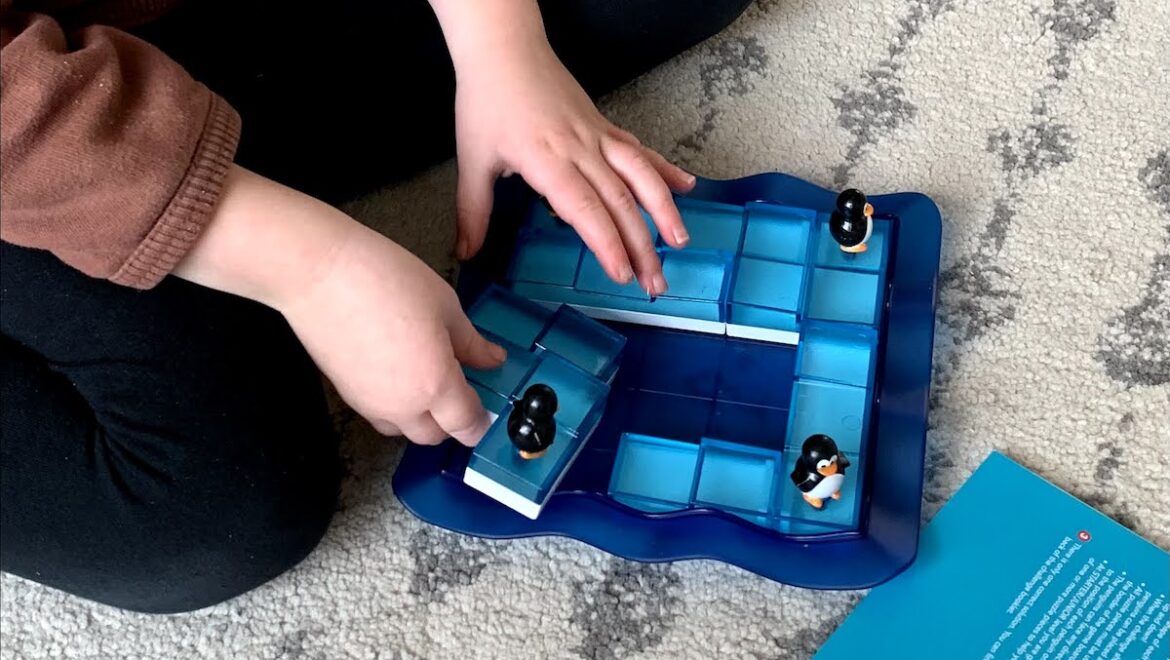Let’s Begin With David Silverglate Who Coined the Concept of “Play Value”
David Silverglate, CEO of ThoughtfullToys is the inventor and play expert who first introduced me to the concept of “Play Value.” David is the mastermind behind toys such as the Oball and Modarri cars and it has been his mission to make play a part of every childhood.
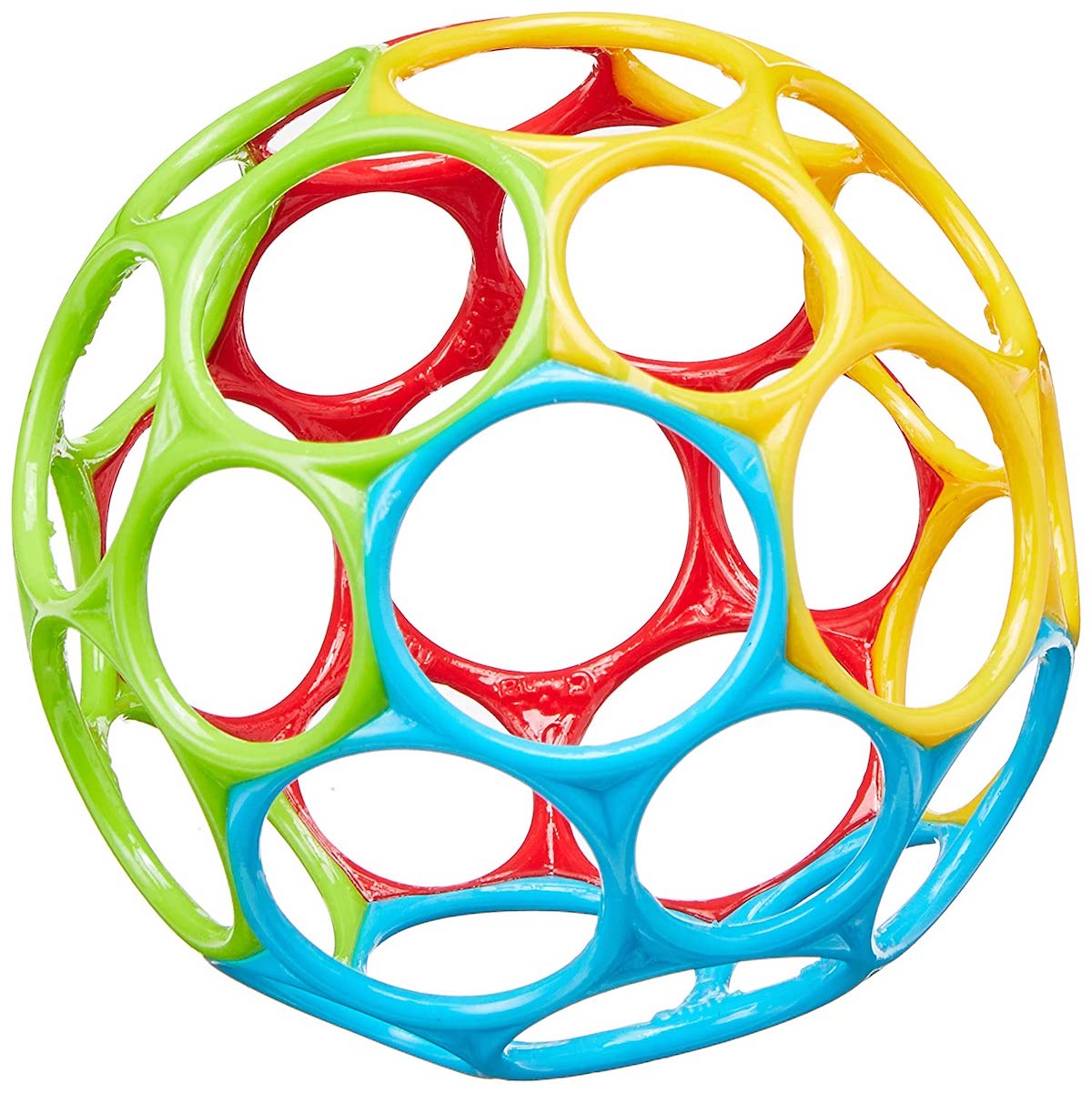
Silverglate made his first version of the Oball with plumber’s o-rings held together with alligator clips. His goal was to create a toy a very young infant could grab and hold onto. It is the first toy most infants can actually grasp. It has sold more than 50 million units worldwide.
The Modarri car is another of Silverglate’s toy inventions. Take it apart and re-assemble it with different colors and styles of fenders, bodies, wheels, and more. Drive it in any direction with the push of a finger. Silverglate created it with Play Value in mind.
What is “Play Value?”
Play Value is simply an equation that will help you determine the overall value of a toy based on two variables:
1) How fun is it?
2) How long will a child play with it?
“Wise parents and grandparents are looking for toys that provide a high amount of satisfaction in addition to a child’s willingness to play for longer periods of time,” says Silverglate. “Play Value is a function of the amount of time spent playing with a toy as well as the amount of the fun the child has during play.”
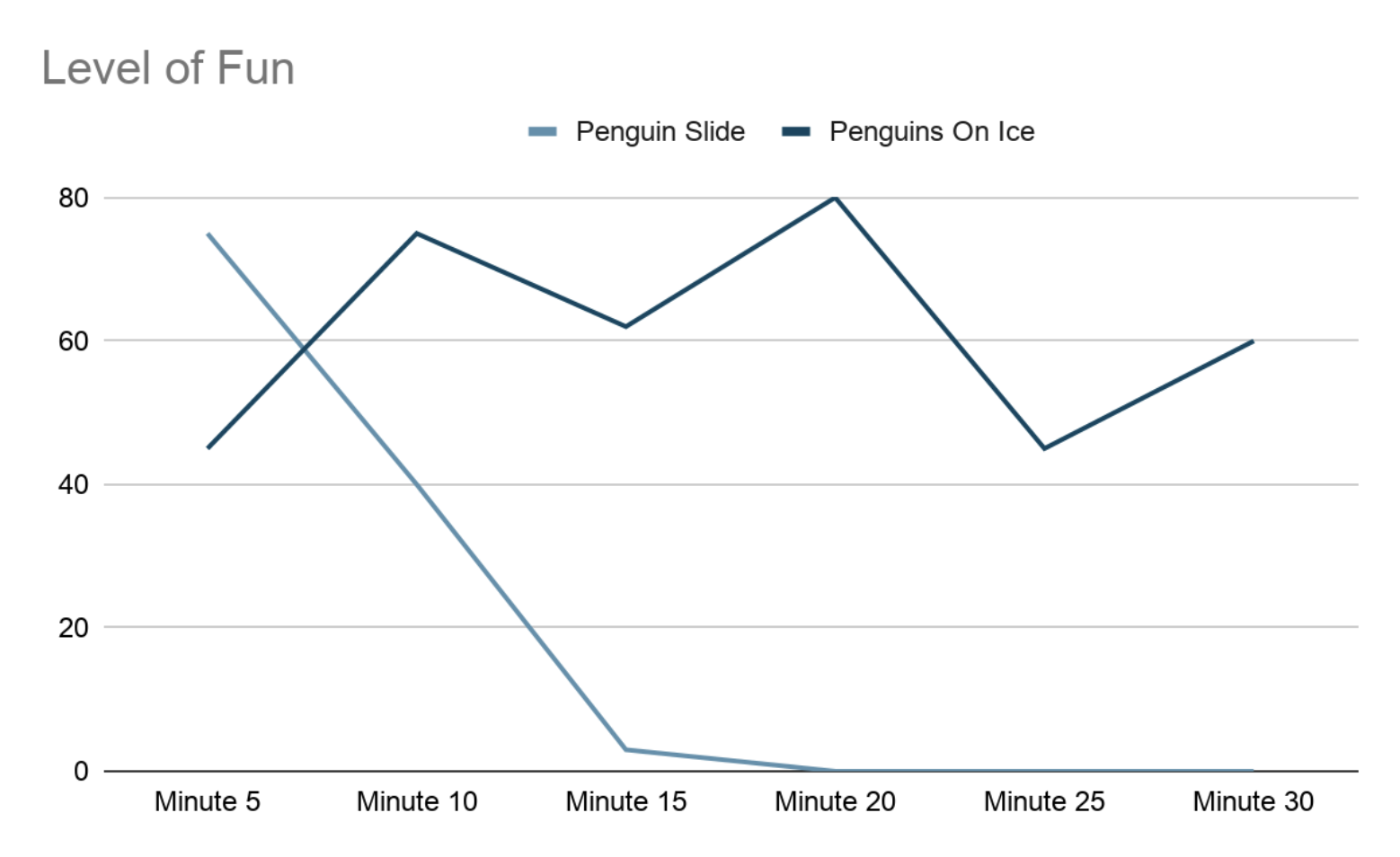
In the graph above, I compared my guesses about the Play Value of two different toys, a Penguin Slide game, and “Penguins on Ice.”
This deceptively simple concept has changed the way I purchase toys for my grandchildren. I look for toys that are fun, but also present several open-ended options for play and therefore can “modulate” in purpose (think blocks of wood that can be used to build towers or cities and can be re-purposed as pretend cans of beans for a pretend grocery store). I’m also looking for toys that require a level of concentration and increasing creativity that assures they will be played with for longer periods of time.
A Play Value Comparison Can Help You Make Purchasing Decisions
Here’s an example to illustrate: Let’s compare two penguin toys and assess their “Play Value” if we know nothing more about them than what we can learn looking at the toy itself (with a little help from the online reviews).
Toys that are fun:
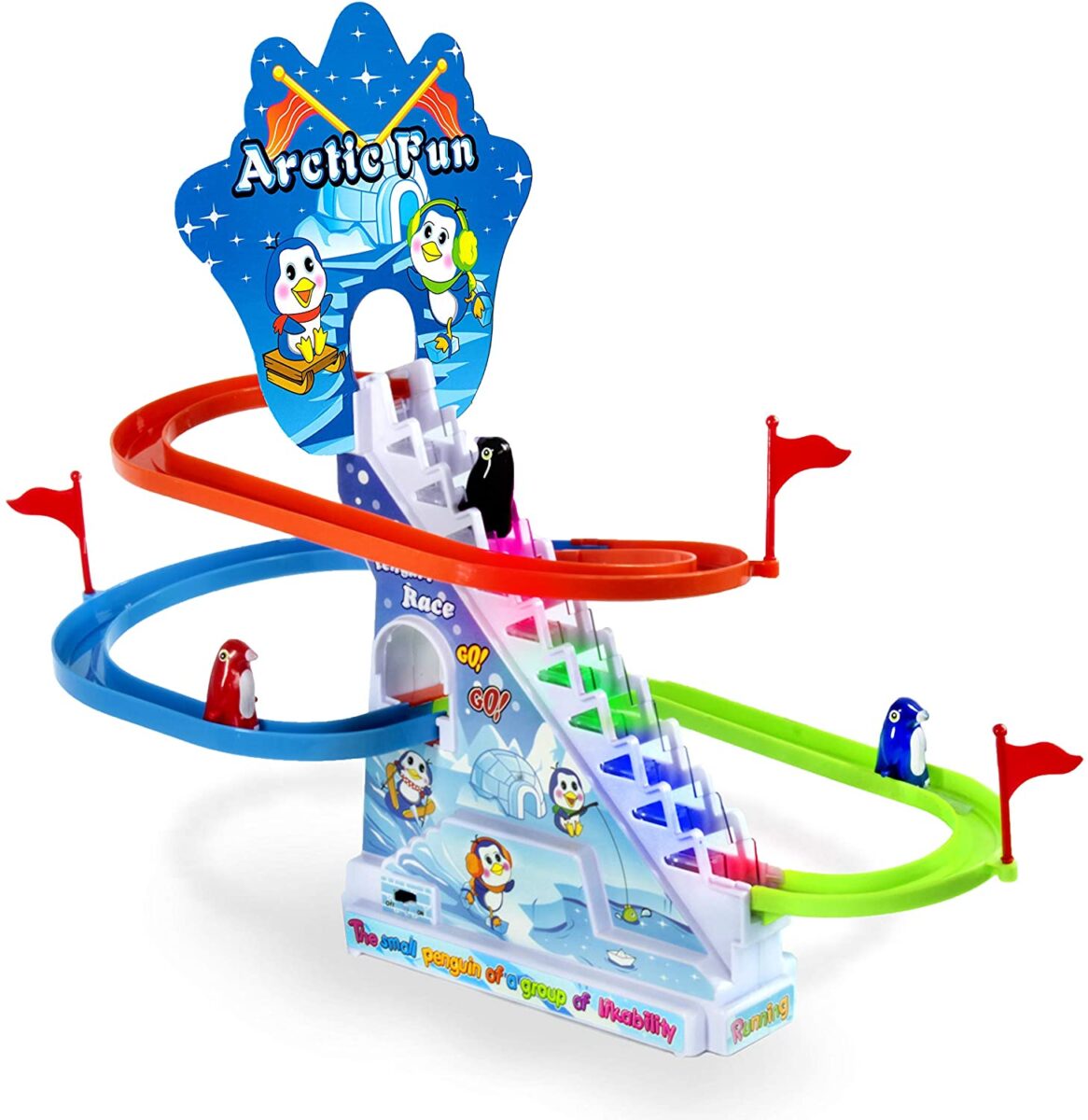
This adorable penguin roller coaster allows penguins to climb to the top of the iceberg and then slide down the slide. It even plays loud, annoying carnival music if you like. And I can learn from the reviews, that many parents bought this toy because they wished for one like it as a child and didn’t ever receive it. Any 4-year-old is going to be totally mesmerized the first time they play with it. My perceived “how fun is it” score would be a 5 out of 5. This toy looks pretty fun!
But my guess at “how long will a child play with it” is much lower—maybe a 2. I am willing to bet that because there’s no way to really change the way you play with this toy–bend it, change it, re-purpose it, or increase the mental challenge, the length of play will last just longer than the child’s age-appropriate attention span.
The At-home Play Trial
I was so excited to try this one out with my grandchildren! And as I expected, they loved it…until they didn’t any more. At my house, sliding penguins were so fun we had a pitched battle about which penguin got to go “first.” The 3-year-olds playing with it lacked the cognitive ability to comprehend that if you are traveling in a circular motion, you will sometimes be at the front of the line, and sometimes at the back. Then there was that annoying carnival music. I was threatened—upon pain of no ice cream to go with my cherry pie—if I offered to let any of the grandchildren borrow it to take home. One noise-sensitive son threatened an immediate “battery-ectomy.” (His word for an operation he performs without remorse on any toy I buy his children that makes annoying noises of any kind).
It turns out, my grandchildren could only sit and watch penguins slide down a slide and then climb up a ladder again for a very few minutes before their brains needed to do something new and they were off to make a different mess. I keep mine in my toy library storage area in the basement so the grandkids can play with it when they come. I have space and patience for holding onto toys like this. My children, who live in smaller apartments and have more minimalist leanings than I do, would “donate” it at the first opportunity.
Toys You Play with For a Long Time:
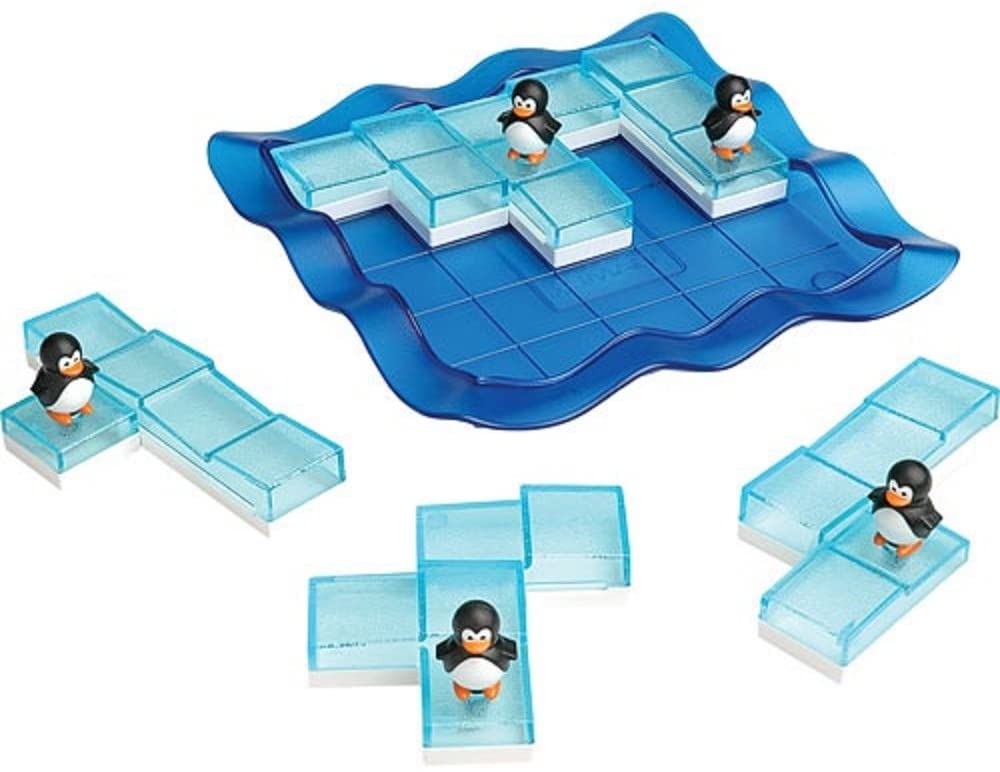
“Penguins on Ice” is designed to develop logical thinking skills and spatial reasoning abilities. It comes with a book of 80 puzzles to solve and you move the ice blocks around on the ocean platform to solve each of the puzzle challenges. It’s rated for children 6+.
The “Penguins on Ice” game presented a different kind of challenge. The pieces are modular. The ice blocks slide back and forth to form differently-shaped puzzle pieces. You have to come up with different ways to organize the same pieces in order to complete each challenge. The “fun” level rises and falls with each puzzle solution, and when the challenge gets too hard, the fun stops, and so does the play.
The At-home Play Trial
This one got a high score from me on my perceived Play Value because it has the characteristics I think might make it something my grandchildren will pick up again and again over time. My expectation is that a grandchild who understands how to play with this game will stay at it for longer than their brief age-adjusted attention span. Or for even longer if an adult takes a moment to assist and assure success.
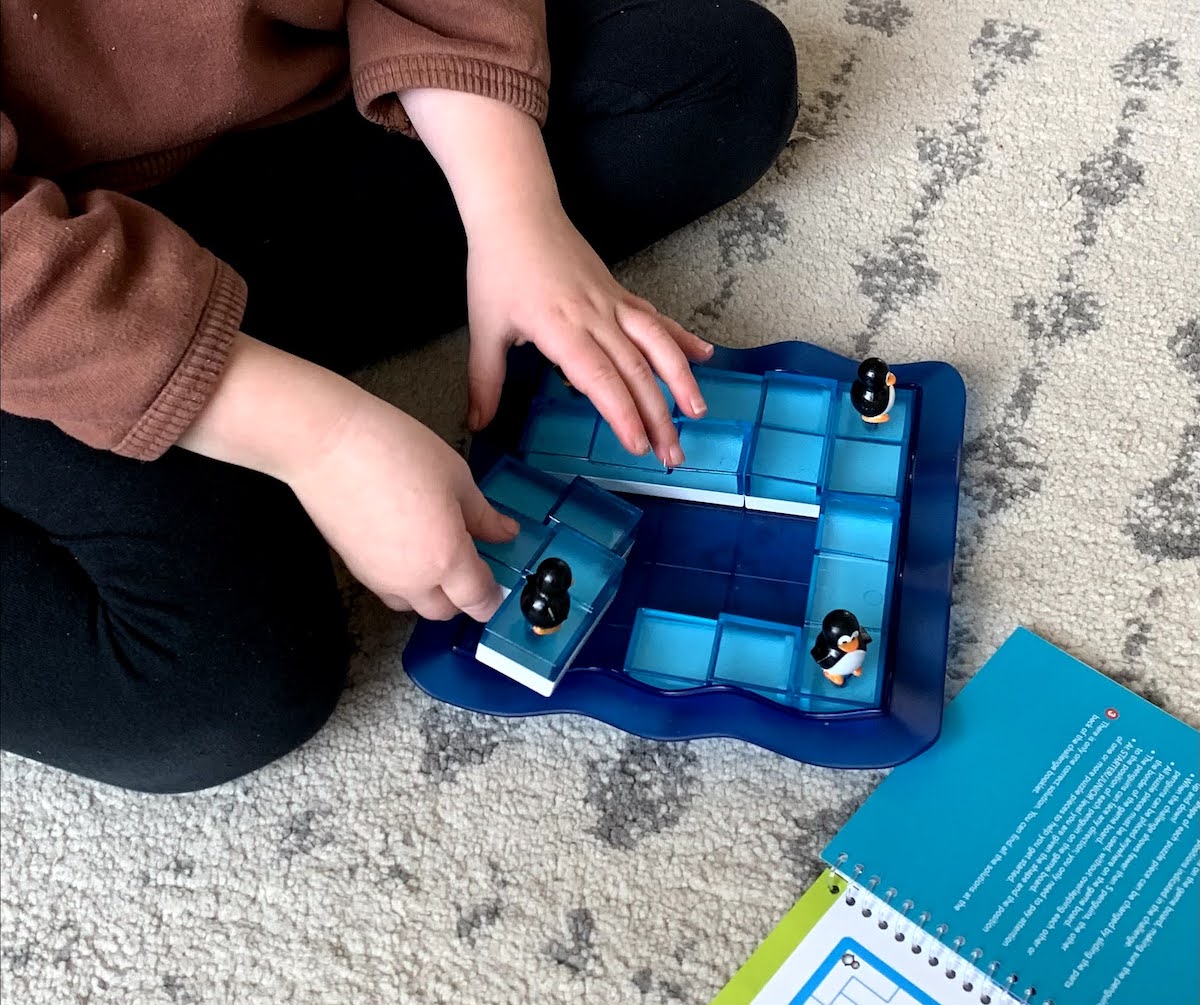
Here’s Play Value in action as my 5-year-old granddaughter works (with my help) to solve one of the challenges in her puzzle book. It required some critical thinking skills from both of us. I’m not mathematically skilled, so it was fun for us to think about how we could manipulate the pieces to solve each challenge. Fun for both the grownup and the child is a big bonus!
Play Value Changes Over Time as a Child’s Cognitive Abilities Develop
One of the tricky things about Play Value is that age-appropriateness becomes a significant factor. This same granddaughter would wear a princess dress every. single. day. when she was three. I purchased one and then three more, and finally ended up with a whole closetful because she would put one on the instant she arrived, change several times during the day, and then sleep in a princess-themed nightgown. She could pair a “Belle” princess dress with a dishtowel apron and a plastic basket if she wanted to re-enact her favorite Disney movie scenes with the driveway as her stage. Or, her dress was equally as great for “poofing” when she was jumping on the trampoline or chasing bubbles. Or as a uniform when she was the postmaster for her pretend mail delivery service.
Play Value Has a Shelf Life
Her play dresses gave her hours and hours of pretend fun. She quite literally lived in them. But now that she is 5, dress-up gowns are a thing of the past. They hold no particular appeal for her any longer. Play Value has a shelf life depending on the child’s cognitive development. But it’s still helpful to use it as you learn how to judge a toy’s age-appropriateness. There’s nothing more disappointing (for you and your grandchild) than purchasing a toy that a child has already outgrown.
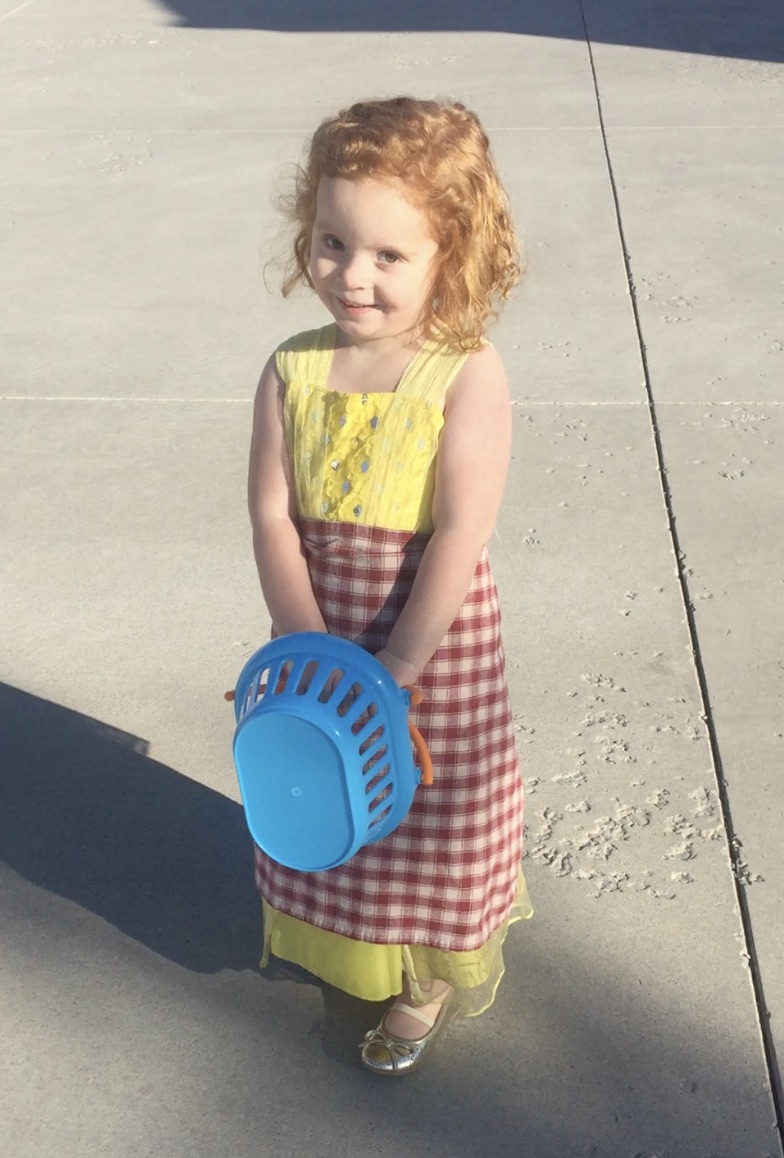
The Play Value of dress-up princess costumes was high with this granddaughter. But only during the season when that type of pretend play was appealing to her.
There are a lot of variables to navigate when you are trying to guess what kind of toy to purchase for a child. While David Silverglate’s concept is mathematical, it can also be imprecise. A toy that mesmerizes one child may not hold any appeal at all for another. But learning about the concept of Play Value and thinking about toys in this way has helped me to be much wiser, and much more successful choosing and gifting toys to my grandchildren that they love. I think it will be helpful for you as well.
- Grandma Nae

